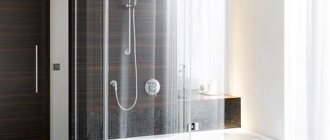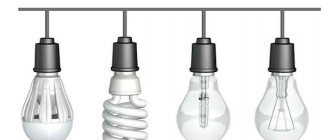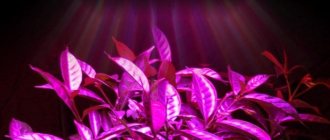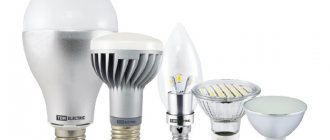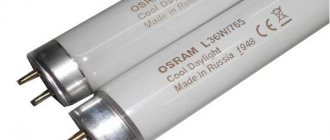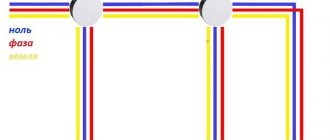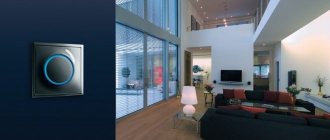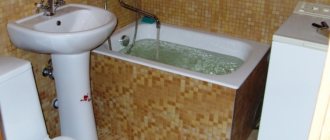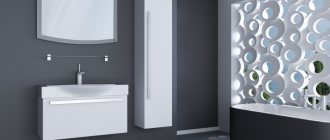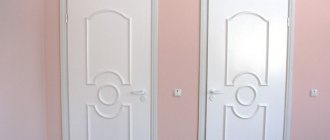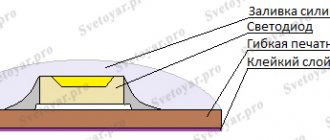Where is it used?
Size E27 can easily be called a household type of base. It is the most common due to its performance properties. Popularity has also affected availability; bases of this type are available from different companies, and you can buy them in the hardware department of any store.
Application area of E27:
- Residential premises (private houses, apartments).
- Utility premises (garages, basements, storage rooms, etc.).
- Small area production.
- Low power street lights.
Lamp for lamps with a diameter of 27mm.
A large percentage of light bulbs that people encounter every day in everyday life meet the E27 standard. Larger rooms require more powerful lighting fixtures.
Reflex type
Also on sale you can find a subtype of incandescent products - E27 reflector type lamps. They differ from the usual models in their special surface, where instead of the usual coating we will see a silver-plated surface. This moment allows you to focus the light in the right place. The solution will come in handy if directional lighting is needed.
The E27 reflector lamp (220V) comes with bulbs of different sizes, so before purchasing it would be a good idea to pay attention to the maximum allowable diameter in your lighting fixture. The standard size should also be indicated on the light bulb itself - R50, R63, R80, etc.
Incandescent products have a color rendering rate of 90%. The main gamut inherent in incandescent lamps and predominant in most models is yellow. Due to this, the luminous flux is very similar to ordinary sunlight. Service life is about 1000 hours.
Advantages and disadvantages
When choosing a lighting scheme for their home, people often decide to use a standard E27 type socket. And this is not strange, because it has many advantages:
- Popularity . The main “competitor” for E27 today is E14, both sizes are available in almost every store. There is no need to order a rare type of light bulb online.
- Price . The mass nature of the product and inexpensive components make it accessible to everyone. Products with E27 socket are inexpensive.
- Range. Incandescent, LED, halogen and energy-saving models are sold with this base. Also, every manufacturer has E27, so you can choose a lighting device based on quality and cost.
The E27 size is available in most popular lamps. - Does not deform . The Edison base, including size 27, is a very durable structure, the shape of which is not affected by temperature changes or shaking during transportation.
- Power . With such a base there are devices even rated at 300-350 W, which is enough even for a relatively small production.
Flaws:
- Possibility of corrosion. If the base starts to rust in the lamp, it will not be easy to remove it later.
A rusty base can cause a lot of problems - There are low quality products. The range of lamps of this size is really large, there are even very low quality models from little-known manufacturers.
When buying a lamp, you need to take into account the conditions of its operation; for outdoor use it is better to take special moisture-resistant options.
Main features of the E27 base
The E27 base is really widespread and has many advantages. But you can recognize it among others primarily by its characteristic design and size.
Design
A glass or plastic flask can have almost any shape, but the base itself is a standard cylinder with a thread. It is with the help of this thread that it is screwed into the lamp socket.
Base with dismantled bulb.
The connecting part of the socket is made of metal or ceramic and has contacts that transmit electricity to the light bulb. There are electrodes on the base, they receive this electricity and transmit it further to the threads or board. An additional element in the design is a rod, its function is to pump out air.
Dimensions
It is almost impossible to determine the size of the connection from the light bulb itself. There are models with a small flask, 70 mm long and 45 mm in diameter, and there are also large options with 180 and 80 mm, respectively. There may also be narrow long lamps or short wide ones.
But the base itself has standard dimensions, as indicated by its name. The diameter is 27 mm, and the height is just shy of 26.67 mm.
Exact dimensions.
Features of the e27 base
To choose the right light bulb for a lighting fixture, you need to consider the type of base. A socket of the wrong size cannot be secured in the socket without the appropriate adapter.
In the name “E27” the numerical designation refers to the diameter of the external thread. The "E" in this case stands for Edison. E27 sockets are available in a wide range. Types of light bulbs with standard thread:
- the small standard E14 has 14 millimeters in diameter;
- the diameter of E27, as already mentioned, reaches 27 millimeters;
- in the E40 device, the thread diameter is 40 millimeters.
Conventional E27 light bulbs are used everywhere in everyday life. They are placed in lampshades, table lamps and chandeliers. The power supply of such a device is possible via a 220V (AC) network.
Design
The E27 base is a cylinder with a large encircling thread. The base is attached to the counter part. The counterpart is the inner surface of the cartridge in contact with the base. The screw method of attaching the base to the socket allows you to safely and quickly replace the desired lamp.
There are many types of screw light bulbs. E27 is the most common base type in Europe, Russia and North America.
The mating part is made of ceramic or metal. At the bottom of the socket there are contact plates through which electricity is transmitted to the light bulb. The energy from one contact goes through the central part of the very bottom of the base. The other two contacts (in some cases only 1 contact) conduct electricity to the threaded part.
Electrodes at the bottom of the base receive electrical voltage and supply it through wires to the board or filament. The power wires run inside the base housing. The black wire is connected to the base body, the red wire is connected to the central terminal. Also, inside the base of a regular incandescent light bulb there is a plug designed to pump air out of the bulb.
220V on E27 is the standard for Russia. In many other countries, lamps with E26 threads powered by a 110V network are more common.
Size and specifications
On an E27 base, the length of the lamp can be, for example, from 73 to 181 millimeters, the diameter of the bulb is in the range of 45-80 millimeters. The shapes of the glass “cap” also differ. The “cap” can be pear-shaped, spherical or spiral-shaped. There are products made in the shape of the letter U or reminiscent of a bazooka.
Product marking
E27 is one of the types of base markings. The marking of the base is a symbol indicating the characteristic properties of an object.
As already mentioned, in the E27 marking the number indicates the diameter of the thread, and the letter indicates that it belongs to Edison’s patent collection.
Bulbs marked with E27 base may vary in power:
| Power, W | Luminous flux strength, Lm | |
| Incandescent lamp | LED emitter | |
| 40 | 5 | 400 |
| 60 | 8 | 700 |
| 100 | 14 | 1300 |
| 150 | 22 | 2100 |
The advantage of this type
Compared to most other options, the main advantage of E27 is its prevalence. If a light bulb fails, it is easy to find in stores in the city. Replacement will also not be a problem, you just need to turn off the light, unscrew the old lamp along the thread and screw on the new one.
The process of replacing a light bulb.
Types of lamps with E27 base, their features
Lamps differ in operating principle and performance characteristics. Each type is also presented under the E27 label.
Incandescent lamps
The device of a standard incandescent light bulb.
The oldest version of lighting lamps, it was for them that the E27 base was developed, so this size is most often installed in incandescent lamps. As for the technical characteristics, the power ranges from 15 to 250 W, and the luminous flux is about 10 Lm/W.
Advantages:
- low price;
- even light;
- not afraid of moisture;
- simple design.
Minuses:
- high energy consumption;
- short service life;
- fragility of the flask;
- heat.
Read more about the characteristics and types of incandescent lamps here.
Halogen
Halogen lamp device.
The operating principle is similar to incandescent lamps, but additionally halogen vapors enter the bulb. This increases the luminous flux, which reaches 17-20 Lm/W. For halogen models, a base marked G is more often used.
Advantages:
- work at different temperatures;
- not afraid of moisture;
- good and uniform light;
- price.
Flaws:
- requirements for stable voltage;
- high power consumption;
- You can only touch them with gloves.
Types of lamps with e27 base
Incandescent lamp
Historically, the first developed version of light sources. E27 was developed specifically for this type, so other types of bases are rarely used in their design. The power is in the range of 15-250 W, the luminous flux is the smallest - approximately 10 lm/W.
The advantages include low price, simplicity and reliability of design, stable glow in difficult operating conditions: high humidity, low temperatures. Good quality of light: smooth, not pulsating.
On the other hand, incandescent lamps have little service life and consume the maximum amount of energy. Because of the glass bulb, they are very fragile and become very hot when illuminated.
Energy saving [CFL]
Compact fluorescent lamps (CFLs) have replaced incandescent lamps. CFLs differ from ordinary direct fluorescent lamps in their shape: the tube with mercury vapor is rolled into a spiral to reduce overall dimensions. High luminous flux: 50-70 lm/W.
The advantages of fluorescent light sources include low electricity consumption and a long service life.
Among the disadvantages, there is a danger to human health due to the presence of mercury vapor; need for special disposal. To operate at the rated power level, it takes some time to warm up. CFLs do not work well at low temperatures (less than +5⁰); Below -15⁰ they are not allowed to be used at all. The quality of their glow depends on the stability of the network voltage and the number of on-off cycles. High price.
Halogen
They are designed like incandescent lamps, only halogen vapors are added to the bulb. This leads to an increase in operating time and light output: 17-20 lm/W. E27 is not the most common type for halogens. Type g is most often used.
Among the advantages of the light source, one can note the ability to glow in difficult operating conditions: at low temperatures, high humidity. Low price, good quality light.
The disadvantages include the dependence of operation on the stability of the voltage in the network, high energy consumption and operating features: it is forbidden to touch the halogen lamps with hands without gloves - this causes rapid failure due to fingerprints on the bulb.
LED
The youngest type of light sources. They are characterized by the highest light output (80-120 lm/W) and the longest operating period. LED lamps with E27 are designed to replace incandescent lamps.
Among the advantages are a stable glow under difficult operating conditions, a wide range of color temperatures, the ability to work with a damaged bulb, and high energy efficiency. Some models have dimming capabilities.
The disadvantages of LED lamps include high price and dependence on the stability of the mains voltage. Low voltage models (12, 24 V) require additional equipment. Also, due to the degradation of LEDs, the brightness decreases towards the end of their service life.
Comparative characteristics of all types of light sources are given in the table. (For comparison, lamps with an equal luminous flux of 1200 lm were used).
| Comparison parameter | Light source type | |||
| Incandescent lamp | "Halogen" | CFL | LED | |
| Power, W | 100 | 50-70 | 25-30 | 12-15 |
| Service life•, h | 1000 | 2000-4000 | 10000-15000 | 20000-50000 |
| Color temperature, K | 2400-3000 | 2700-3000 | 2700-6000 | 2800-6500 |
| Price | Low | Average | Above average | High |
| Disposal | Regular | Separate from ordinary glass | Only at special collection points | Regular |
| Environmental Safety | Safe | Safe | Very dangerous | Safe |
| Electricity consumption | Maximum | High | Small | Minimum |
| Dependence of operation on voltage drops | Eat | Eat | Eat | Eat |
| Low temperature dependence | Absent | Absent | Present | Absent |
| Dependence on high humidity | Absent | Absent | Present | Absent |
- — the service life declared by the manufacturer is given when operating under ideal conditions.
In which lamps are they used?
Lamps with E27 socket are used for household and industrial lighting. They are suitable for table, wall, and pendant lamps. Size E14 is also used in low and medium power lighting fixtures, including various lamps and sconces. For powerful outdoor lighting, E40 lamps are used; they have a power of up to 2000 W.
Main dimensions of lamps.
What is E27
E27 is the most common type of base, the letter E indicates an Edison thread, 27 is the outer diameter of the base in millimeters.
Only an E27 electric socket is suitable for such a light bulb. It simply cannot be screwed into others. There are also E14 light bulbs (and sockets too), they are called small-base lamps. Previously, as a rule, such light bulbs were used in refrigerators; now they are used in various lamps and are beginning to replace the E27 size.
In addition, we can name other standard sizes of electric lamps with an Edison base:
- E40 - used in high-power street lamps;
- E26 - inch base;
- E12 - chandelier base.
The last two sizes are used in the USA and Canada.
Compatible with other sizes
The connection of the base allows, if necessary, to replace the part or carry out repair work. This option is not directly compatible with others, but the problem can be solved by using special adapters.
Application of base adapters
When you need to insert a lamp into a socket that is not intended for it, you can use special adapters. They simply allow you to go, for example, from size E14 to E27 without losing power or any other qualities.
But there is also a drawback - the length of the structure, which is not always convenient. If the light bulb protrudes strongly from the shade, this negatively affects the appearance of the lamp, and also increases the risk that the light bulb can be accidentally touched and broken. Therefore, the use of adapters is not always advisable.
Base adapter from 14 to 27 mm.
As for the range of adapters, there will be no problems. They are presented in an assortment in lighting stores, and the required adapter can also be ordered online. Adapters are produced by Cosmos, OBI, Lemanso, E.Next and dozens of others. There are even models for combining different types of bases, for example from G9 to E27 or vice versa. Dual type models are available; two lamp sockets can be output from one input. The cost starts from ten rubles and can reach several hundred.

